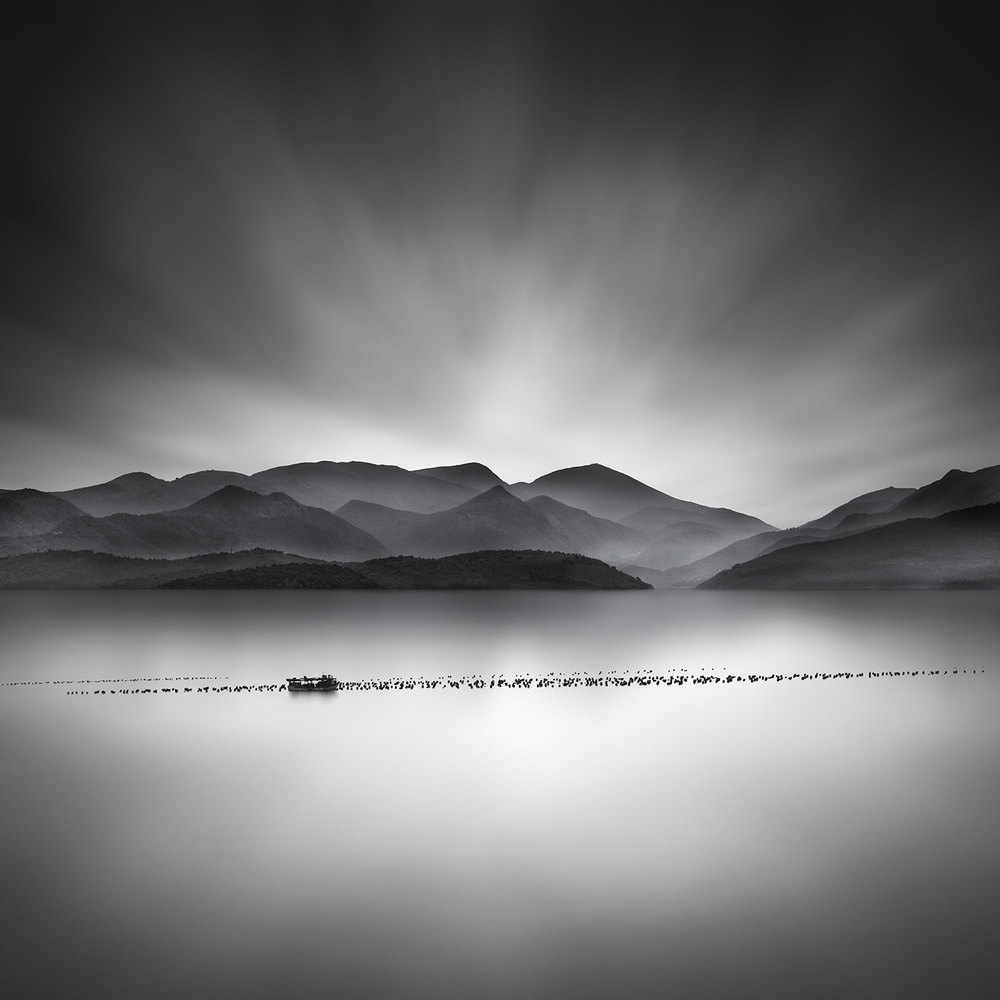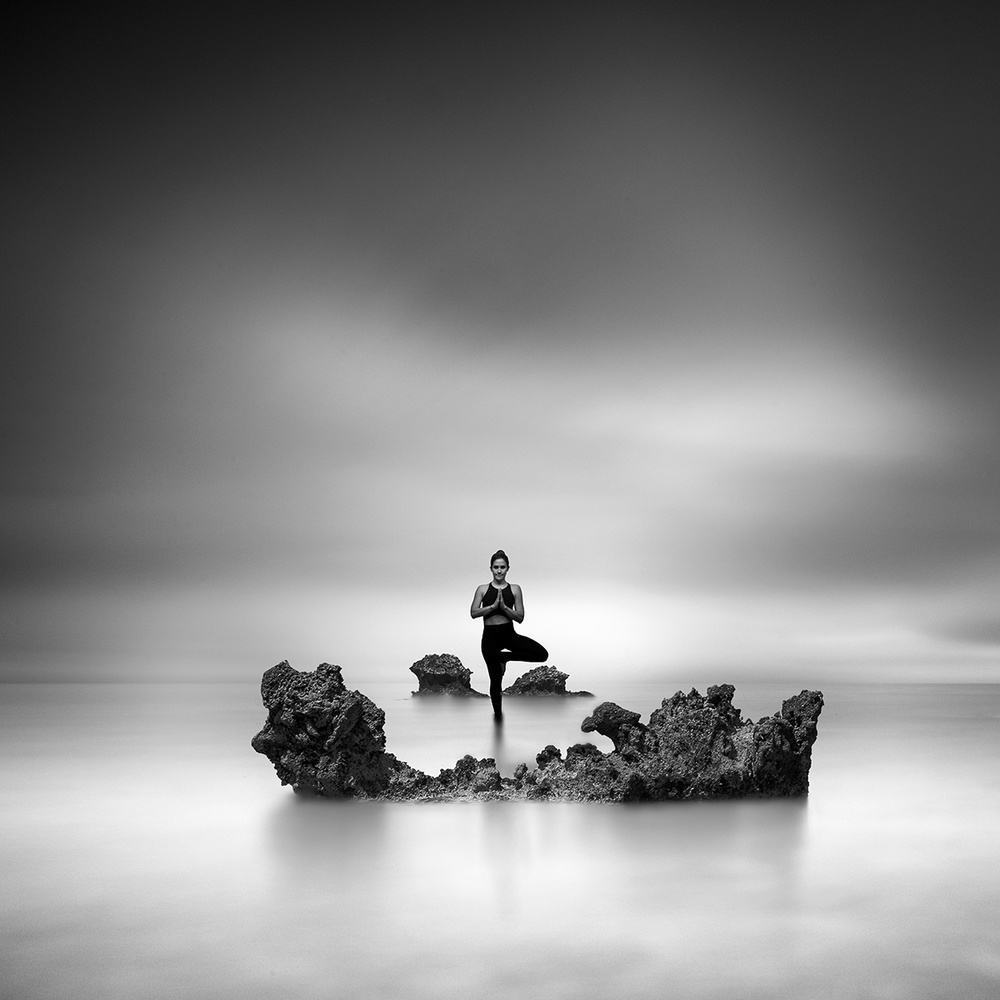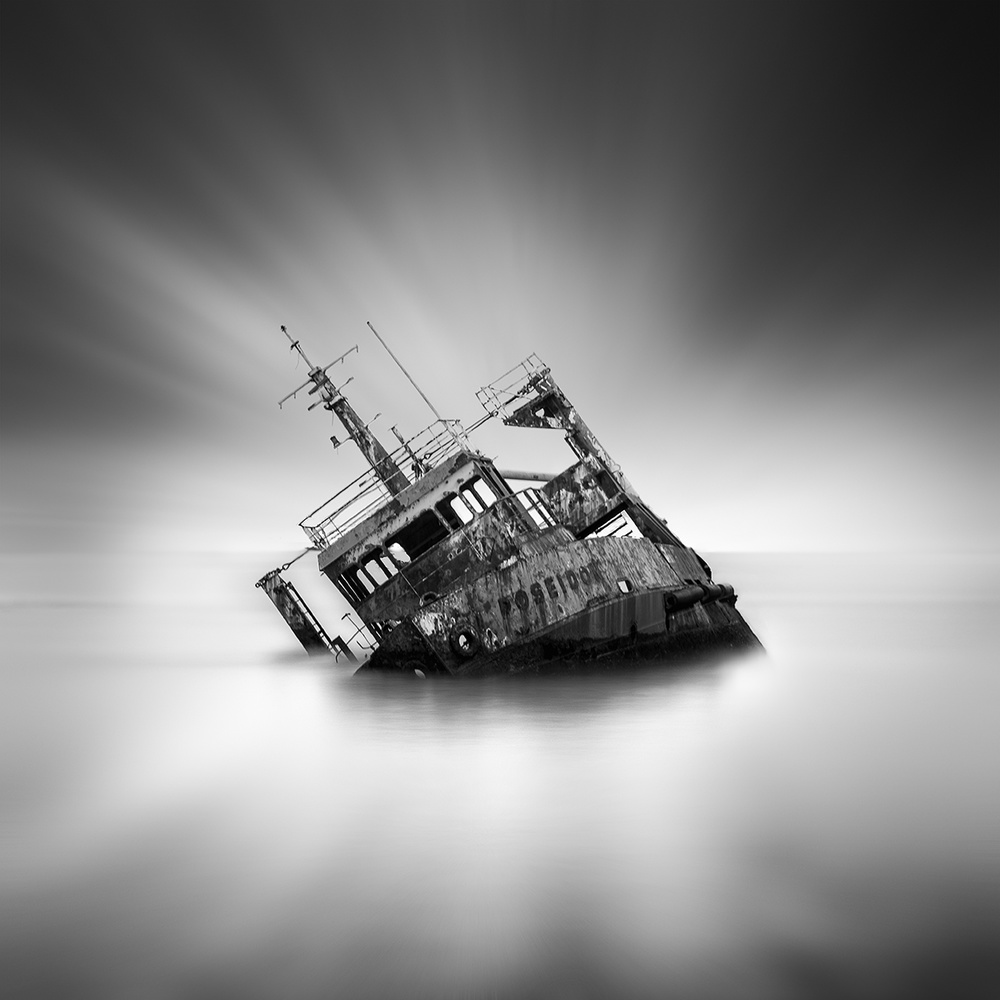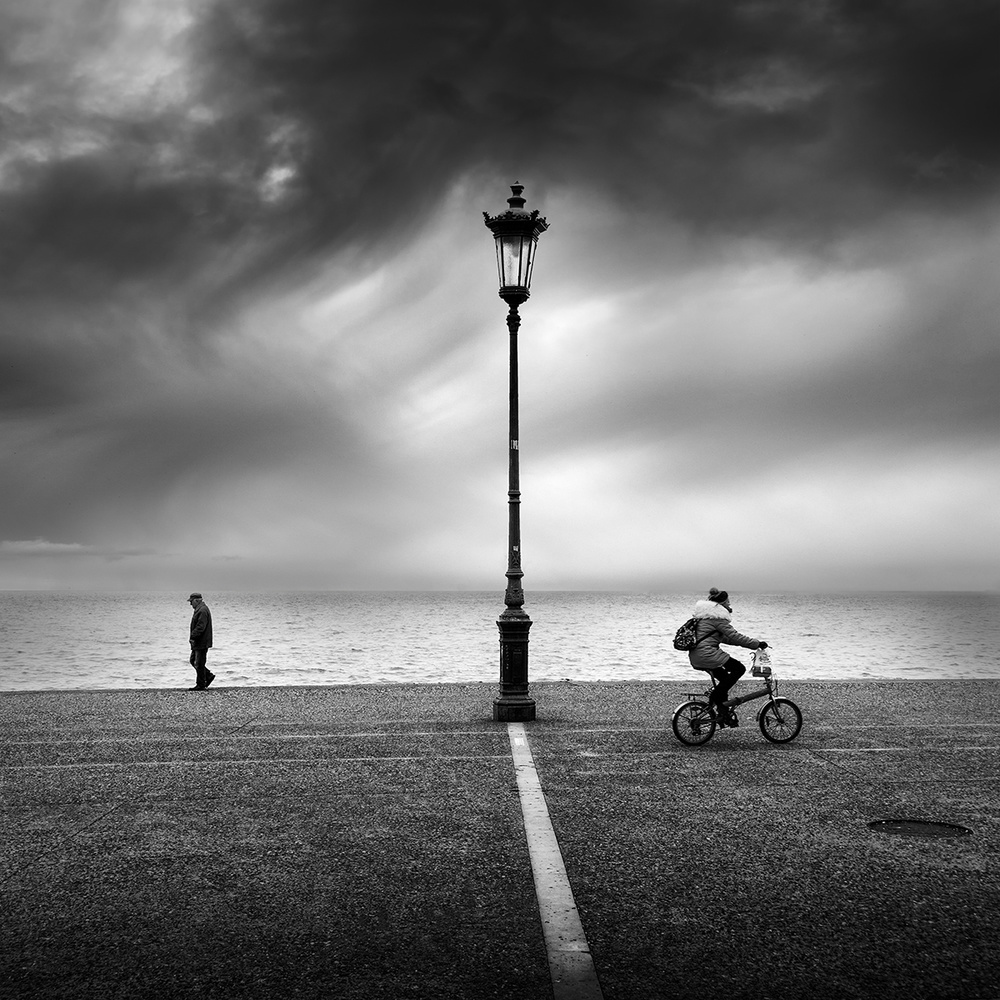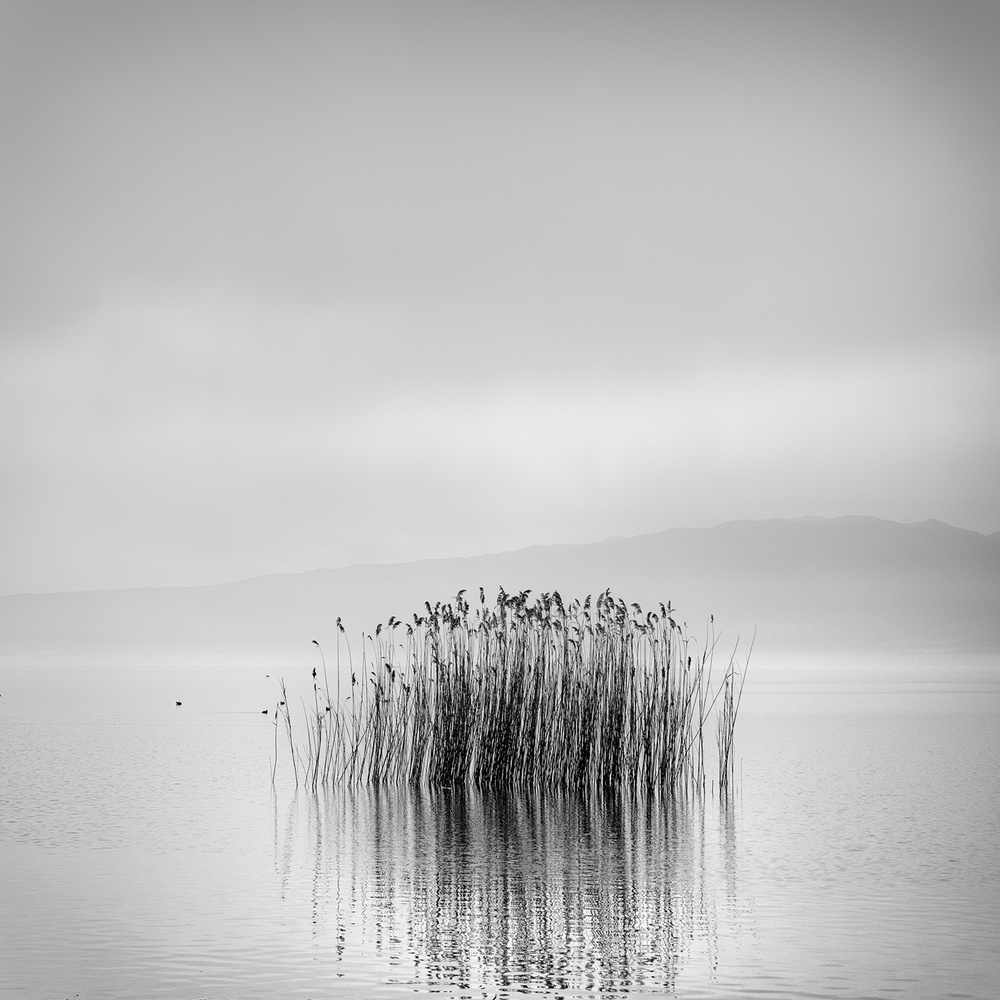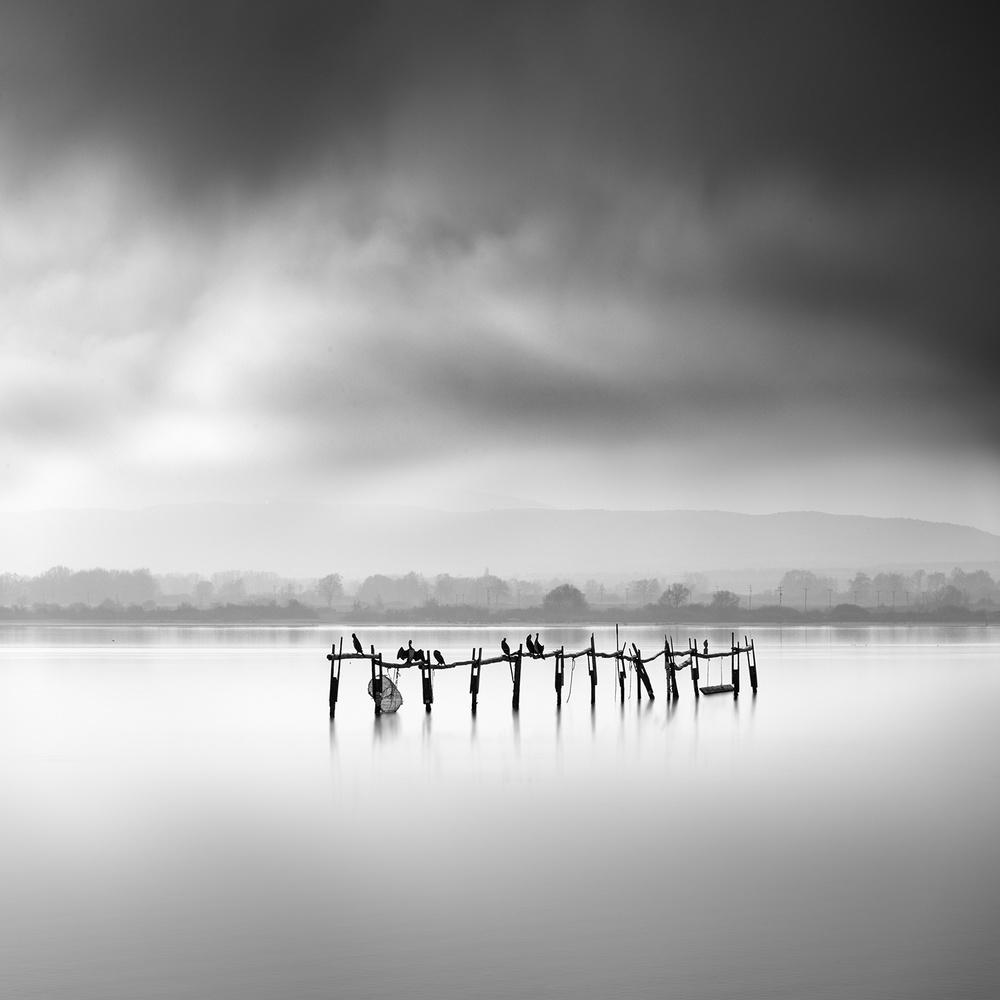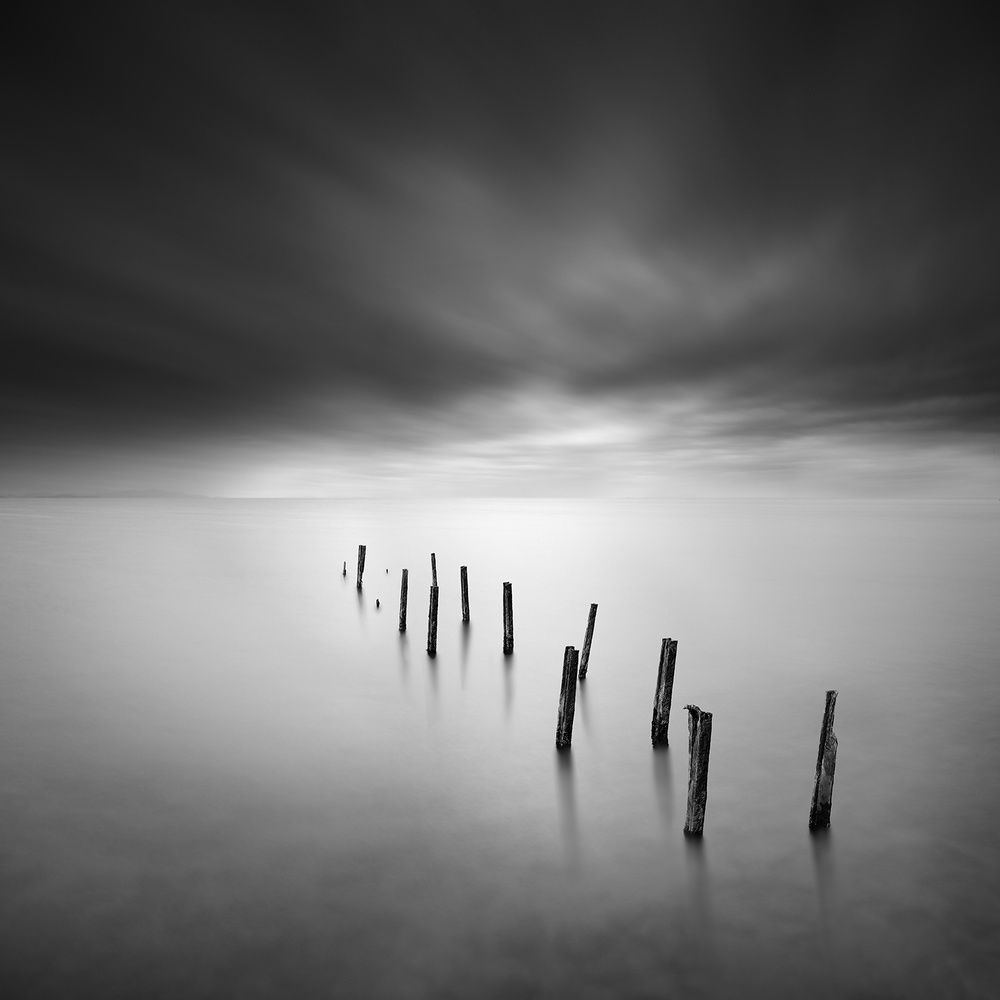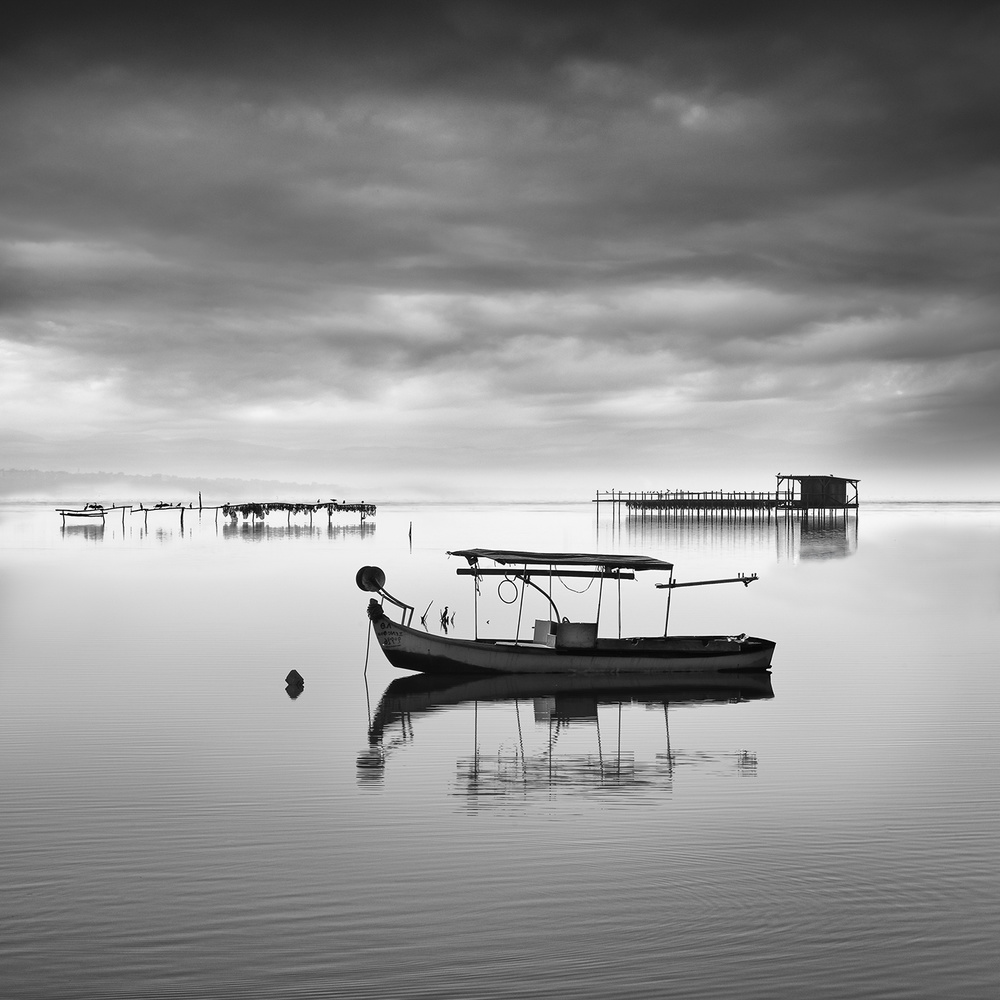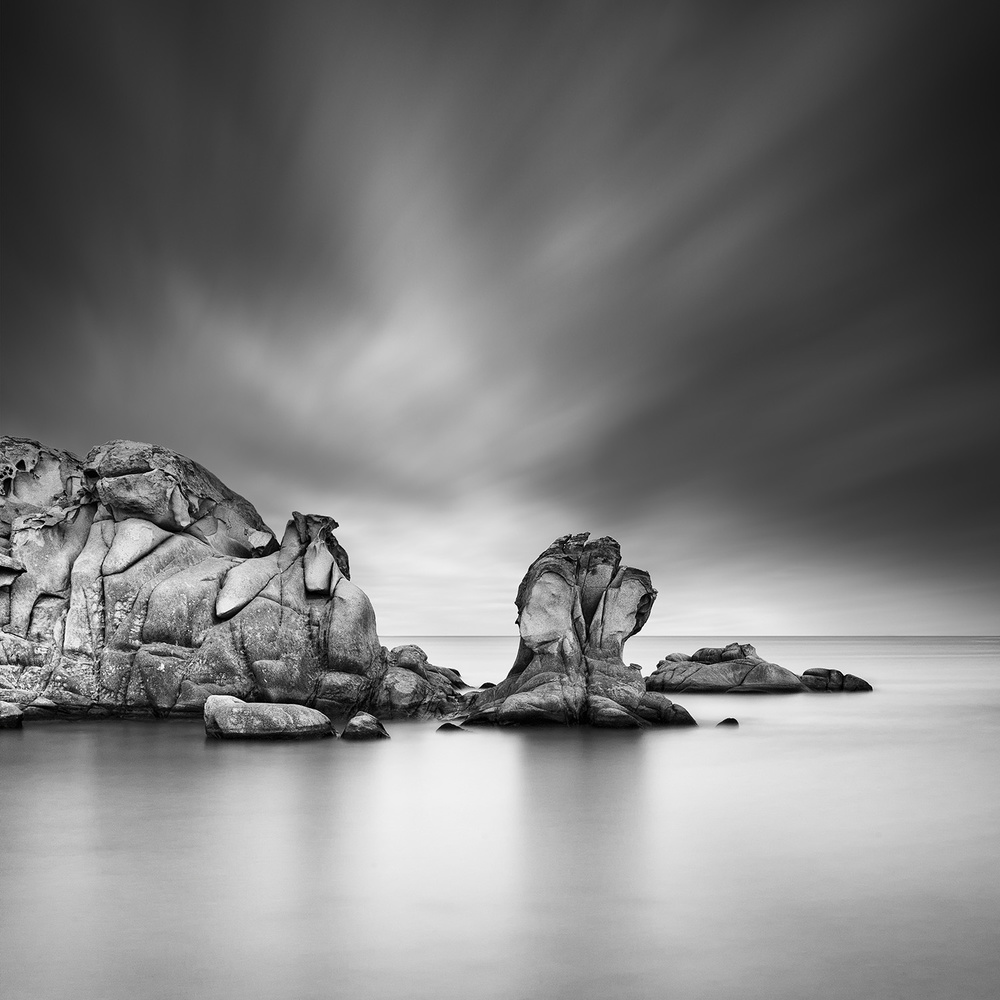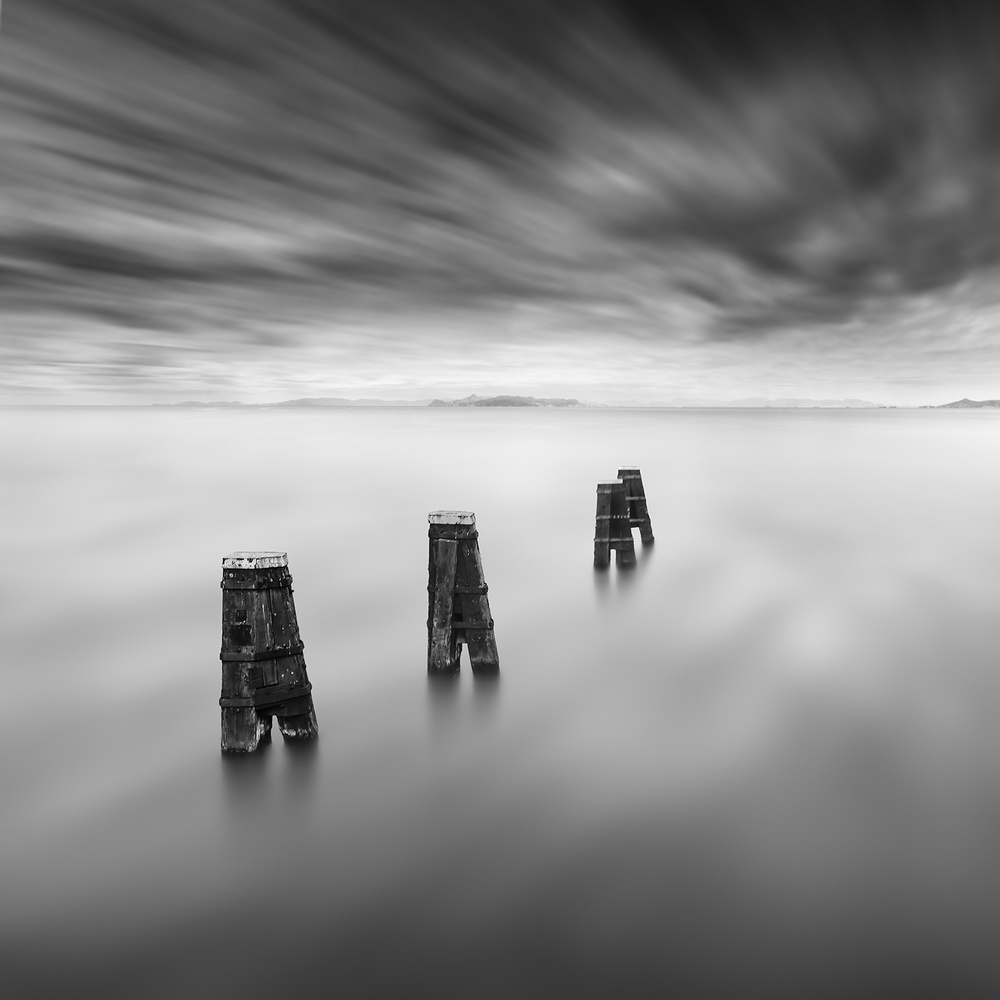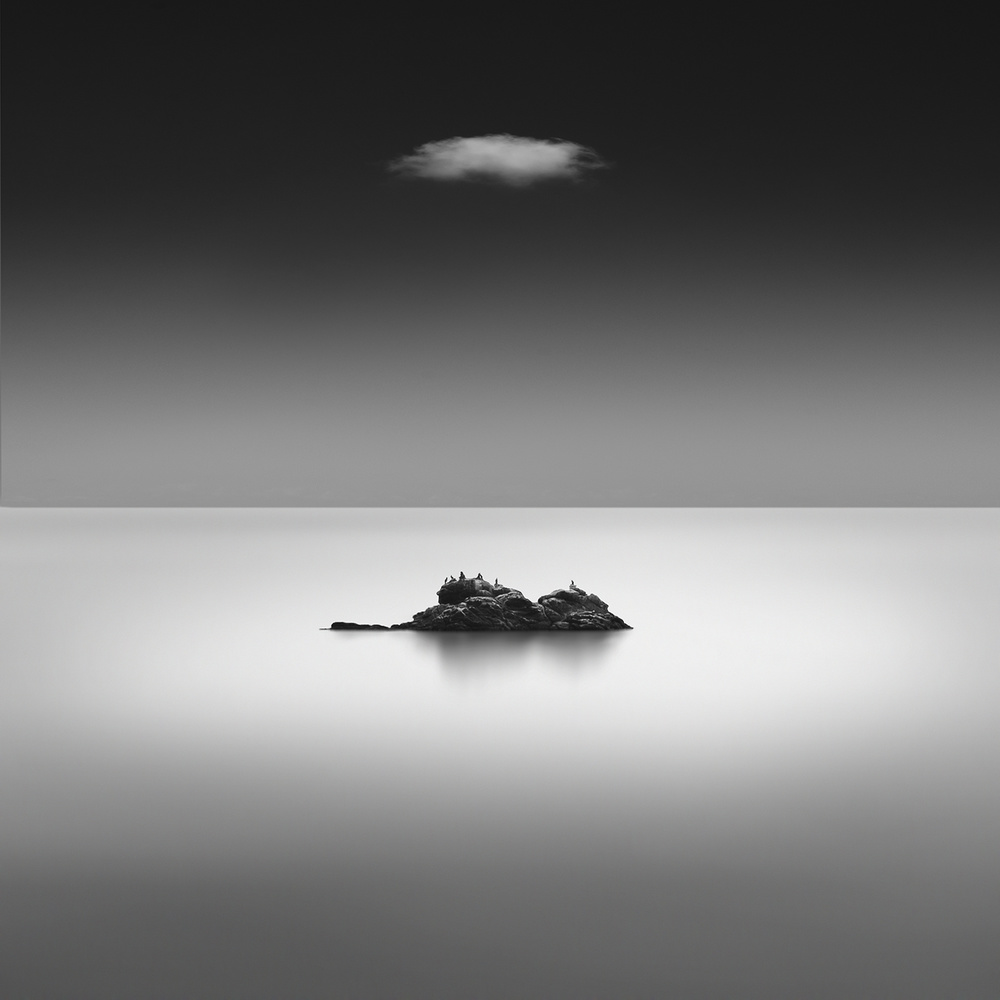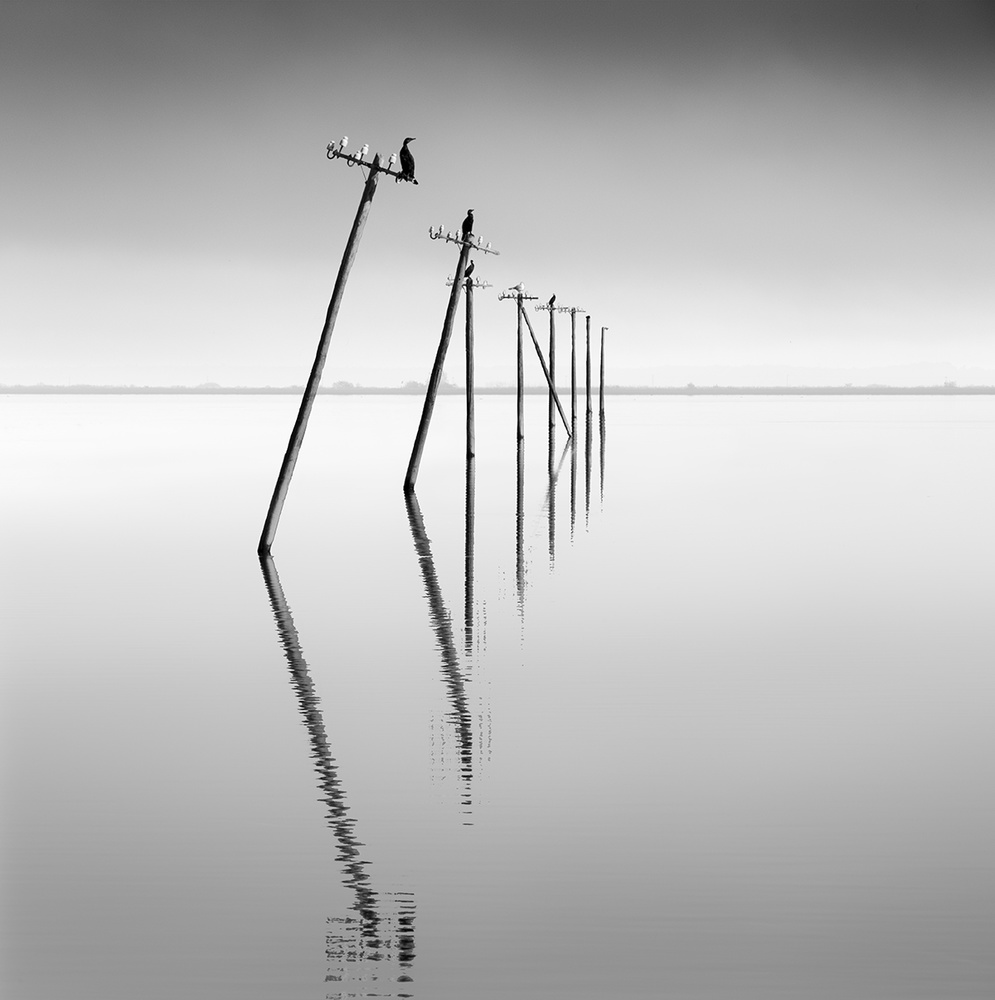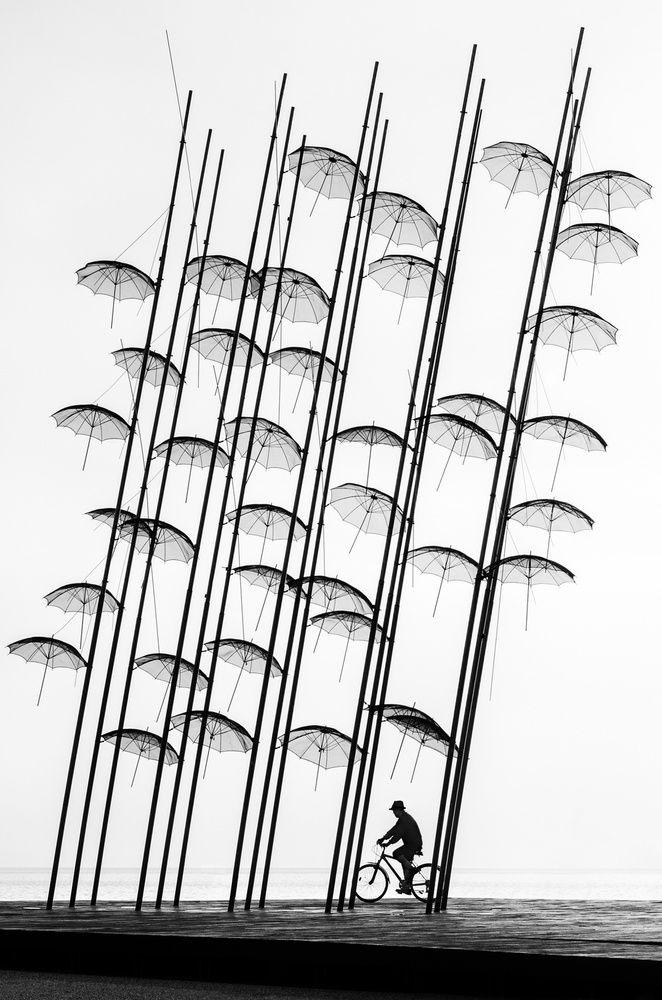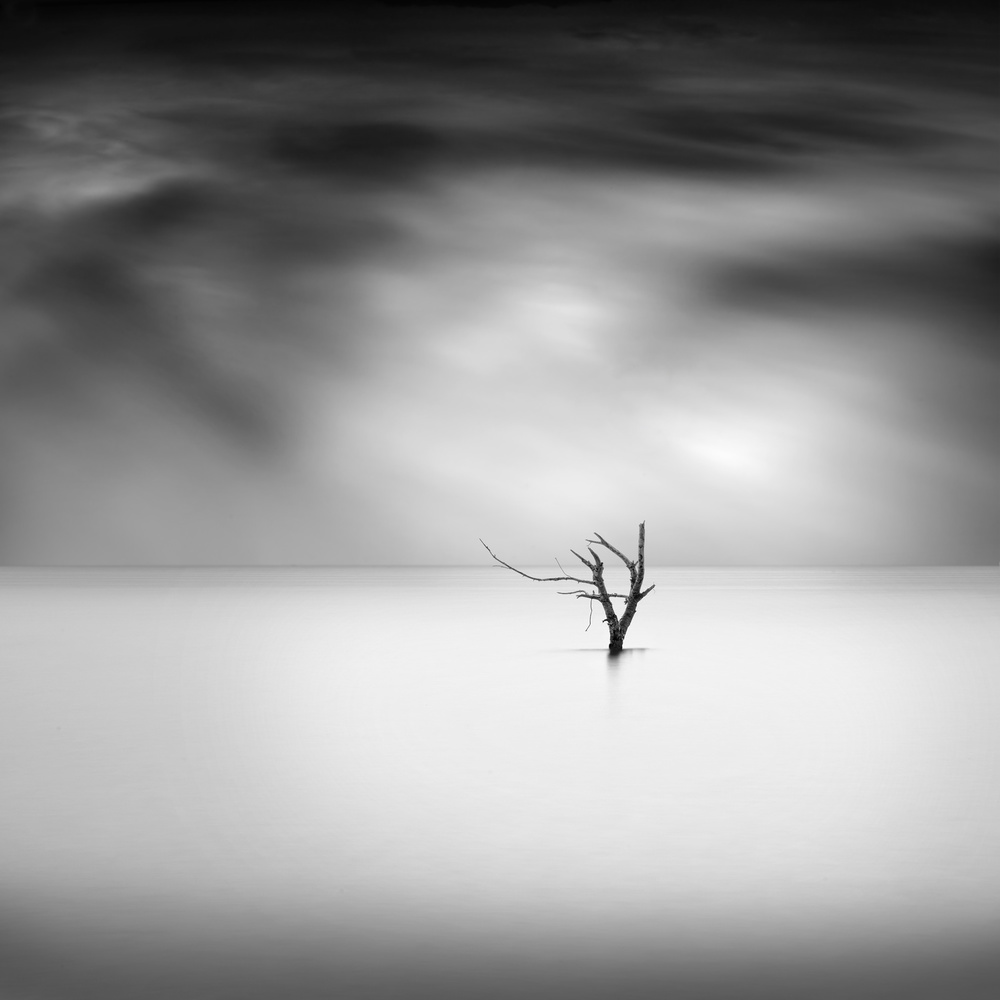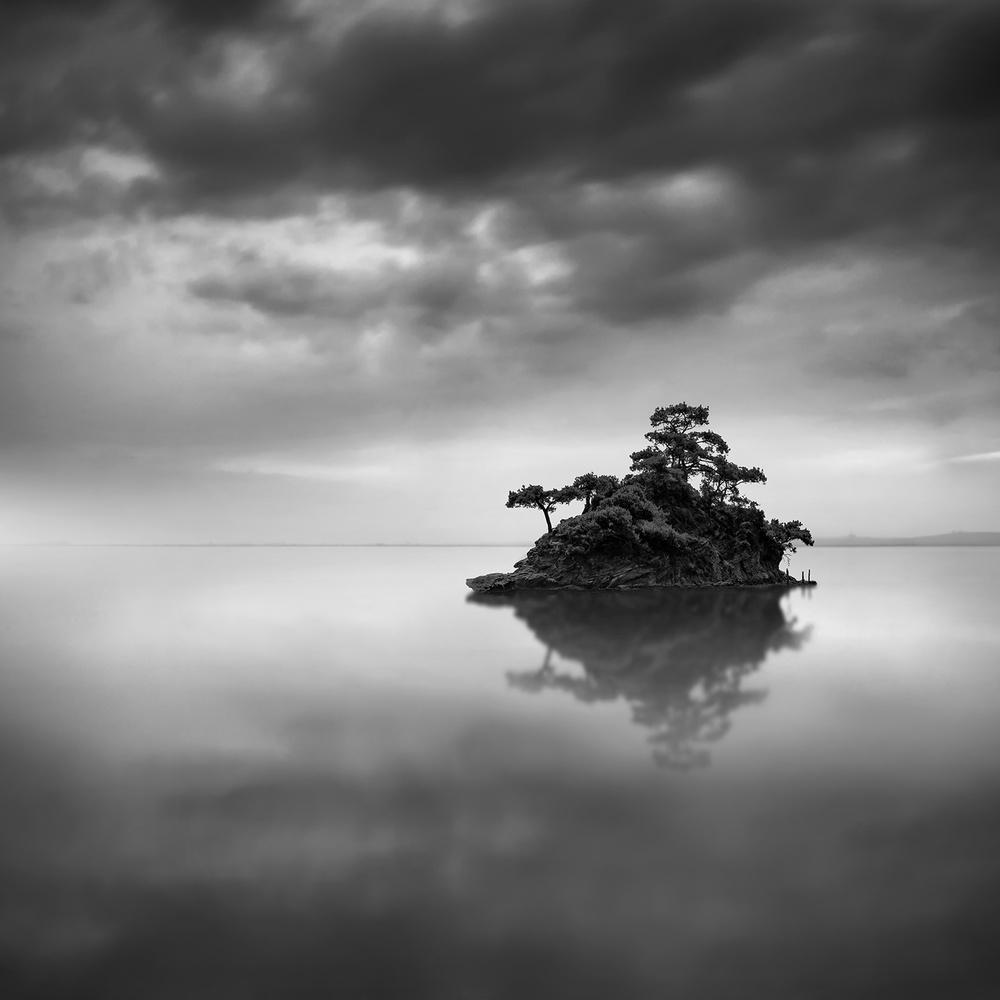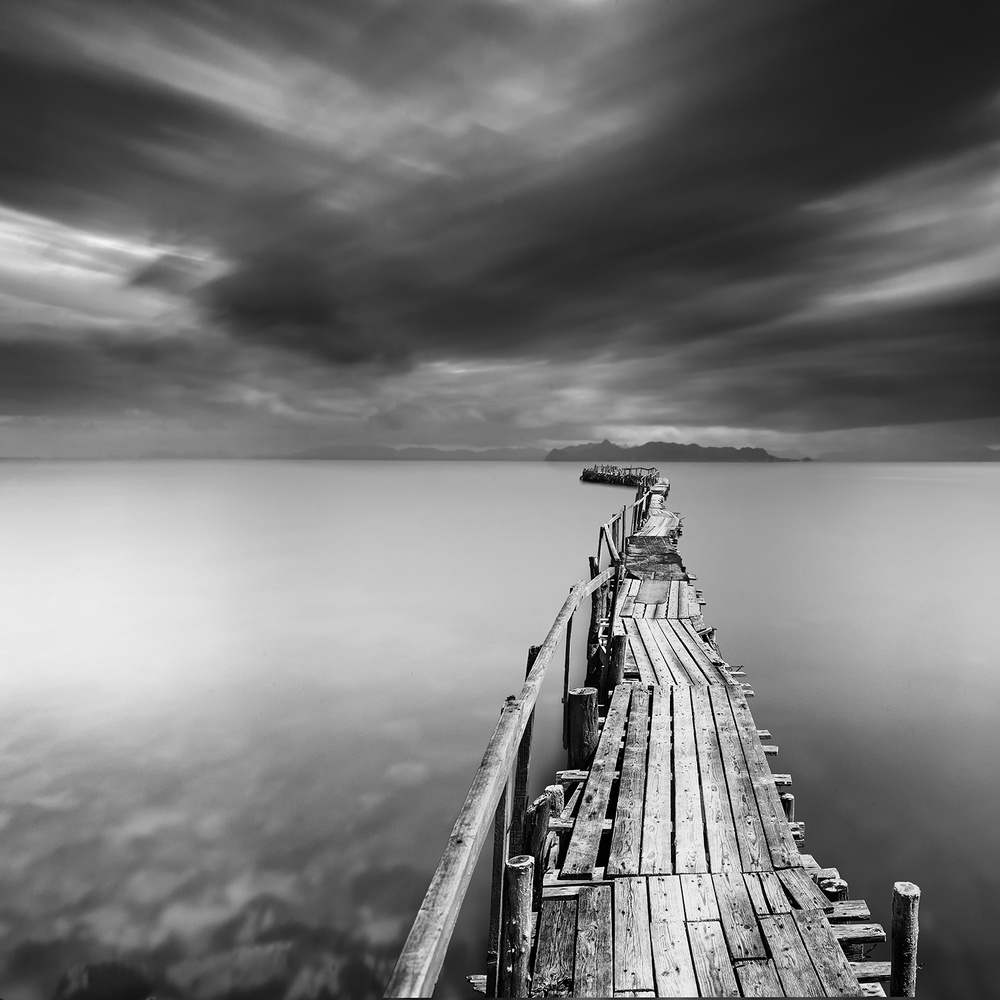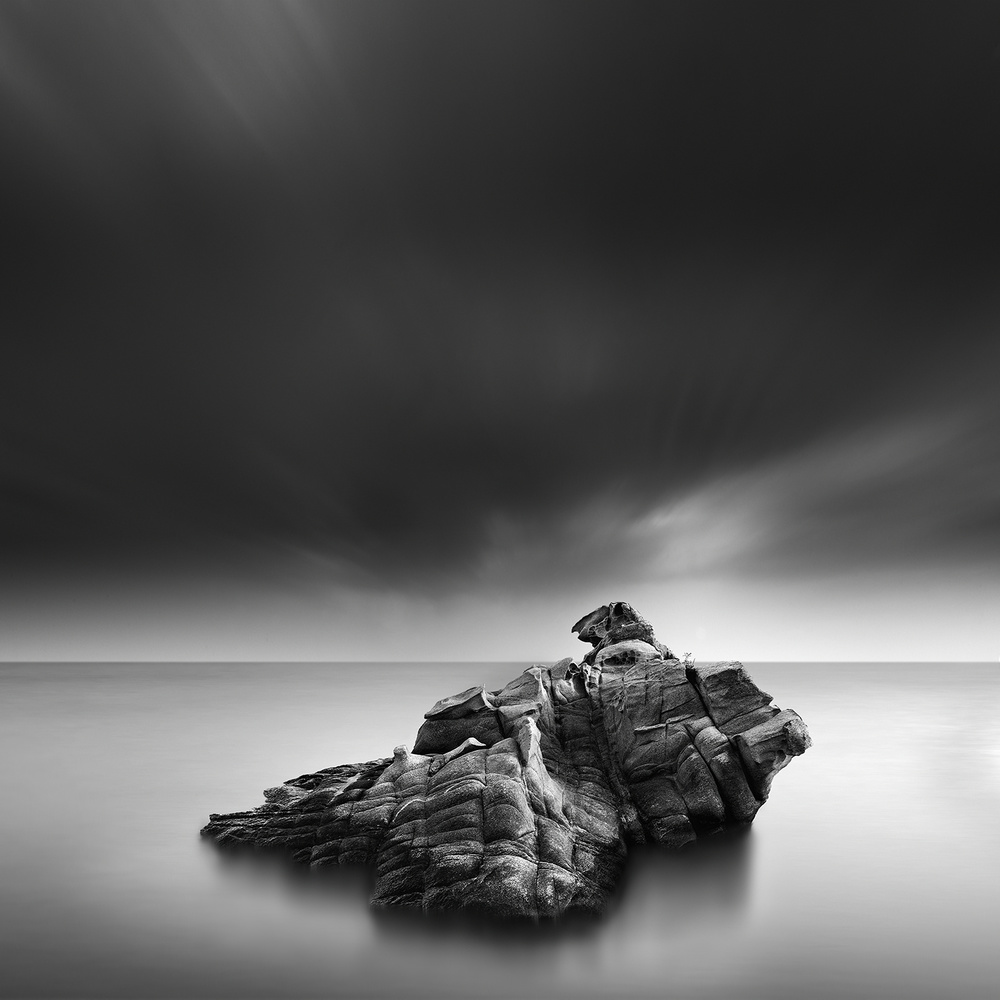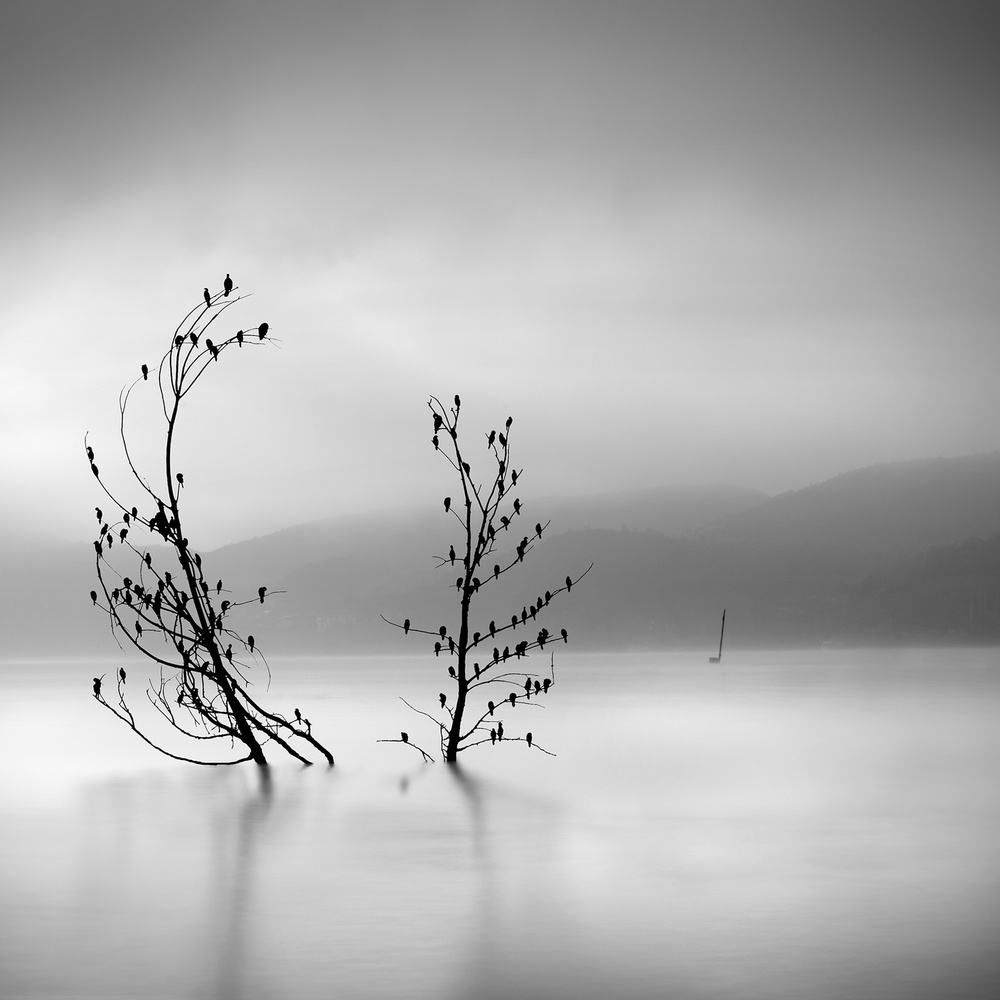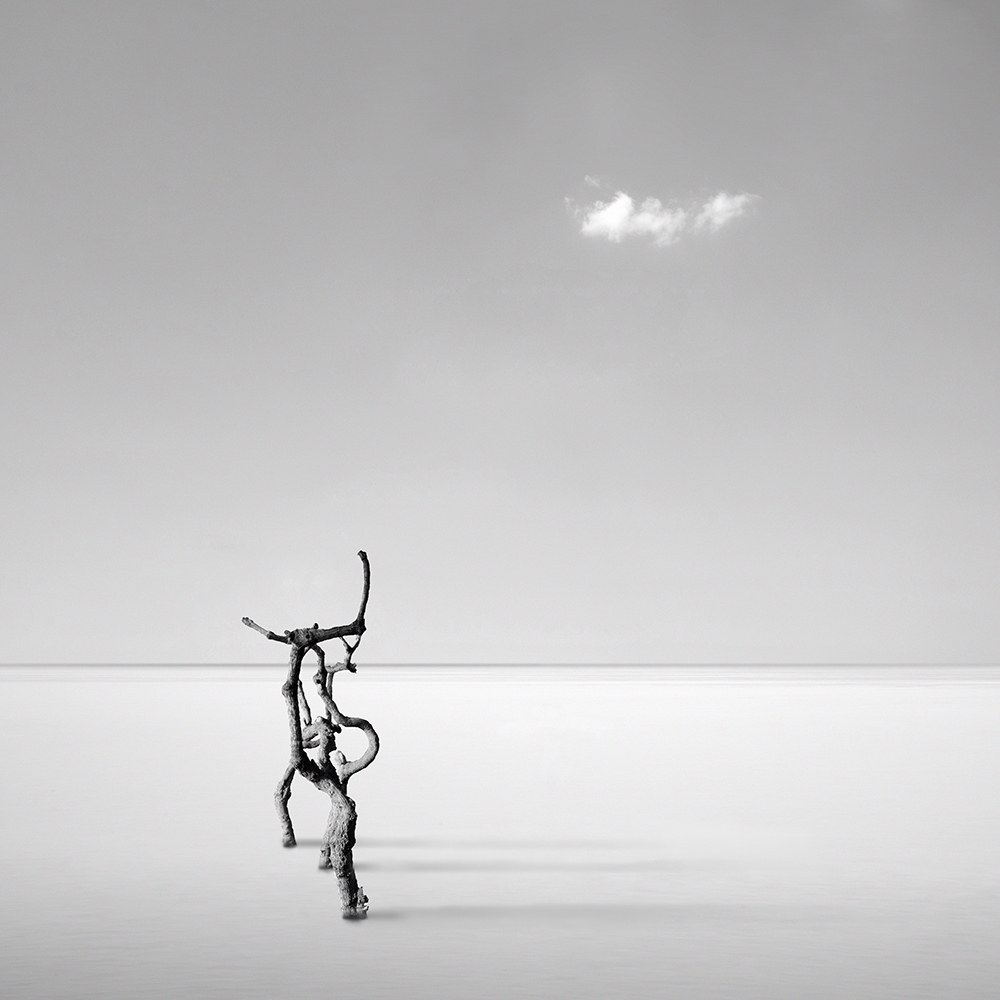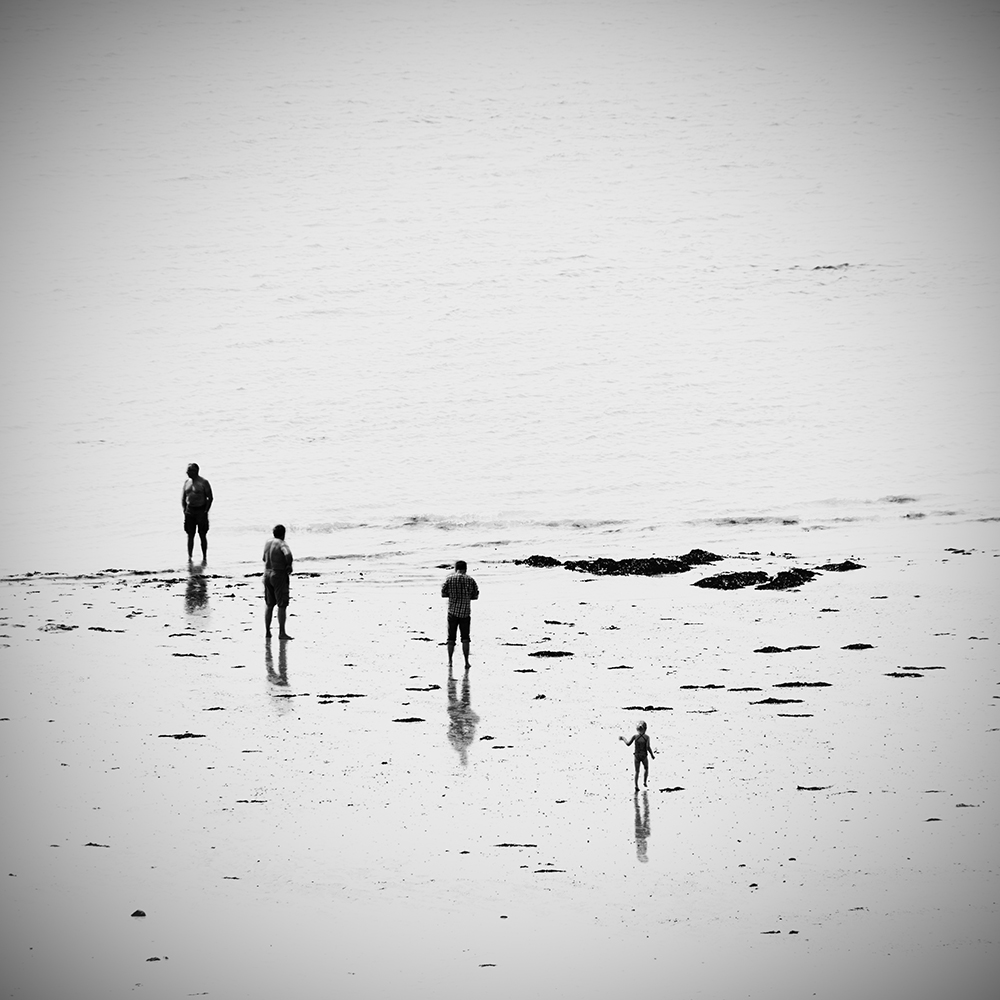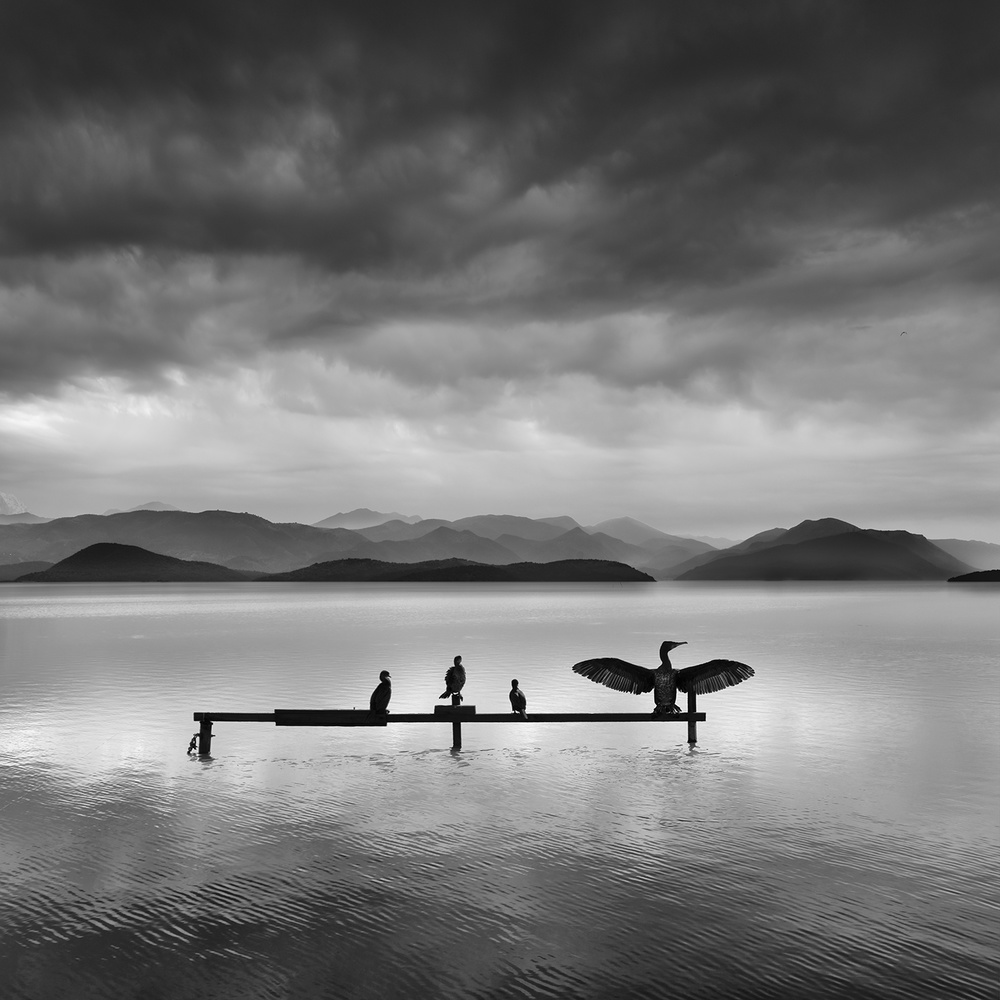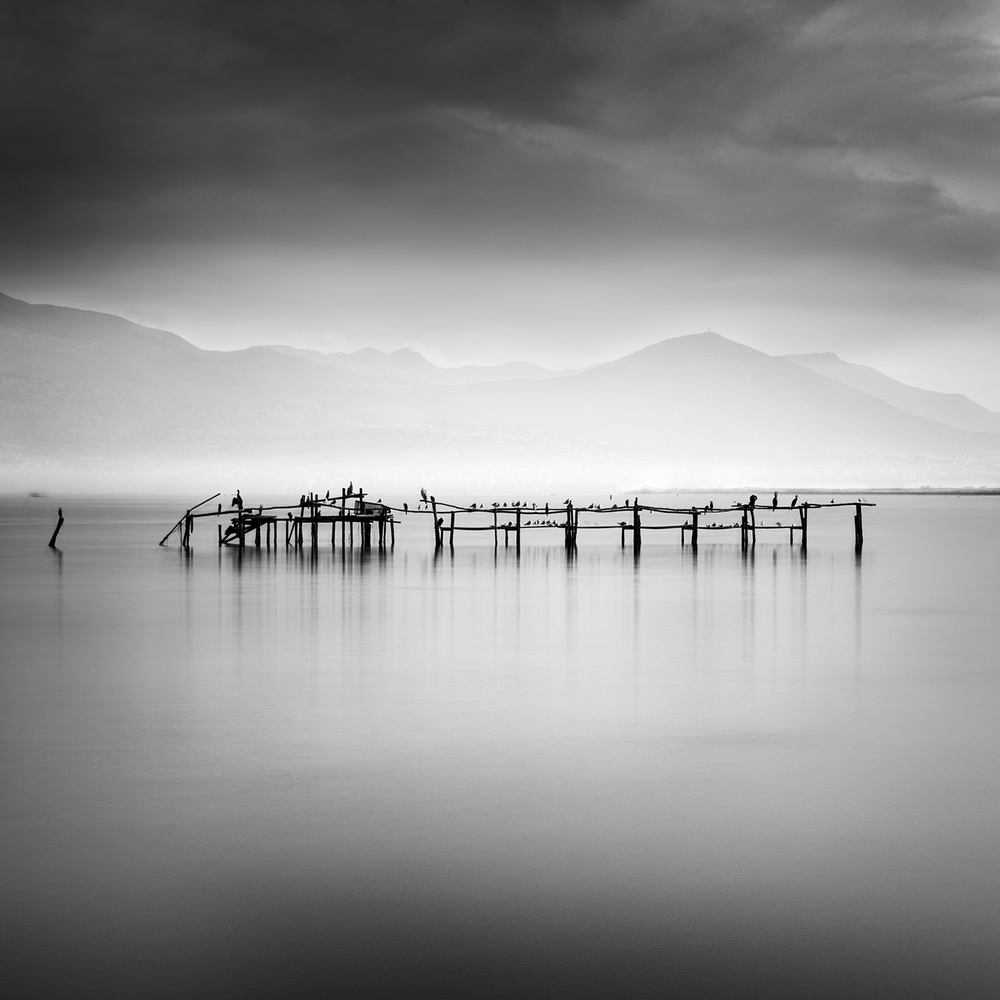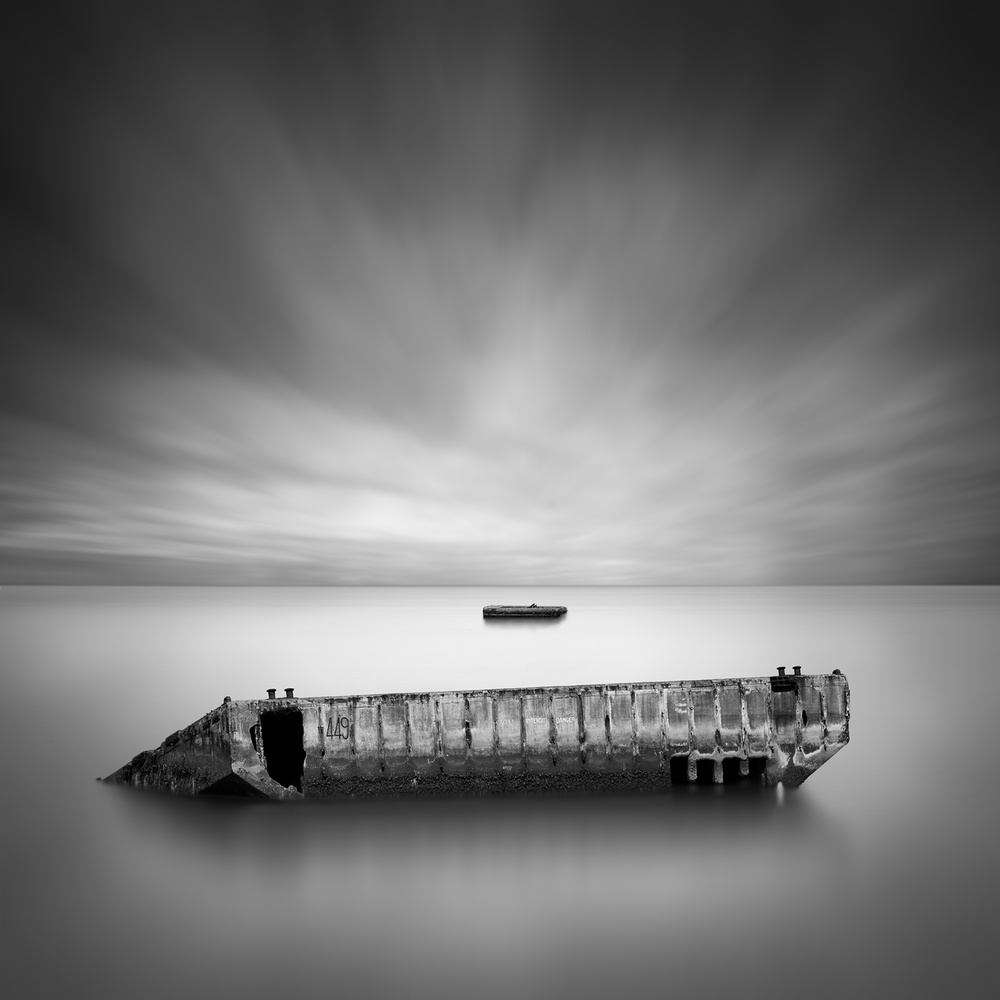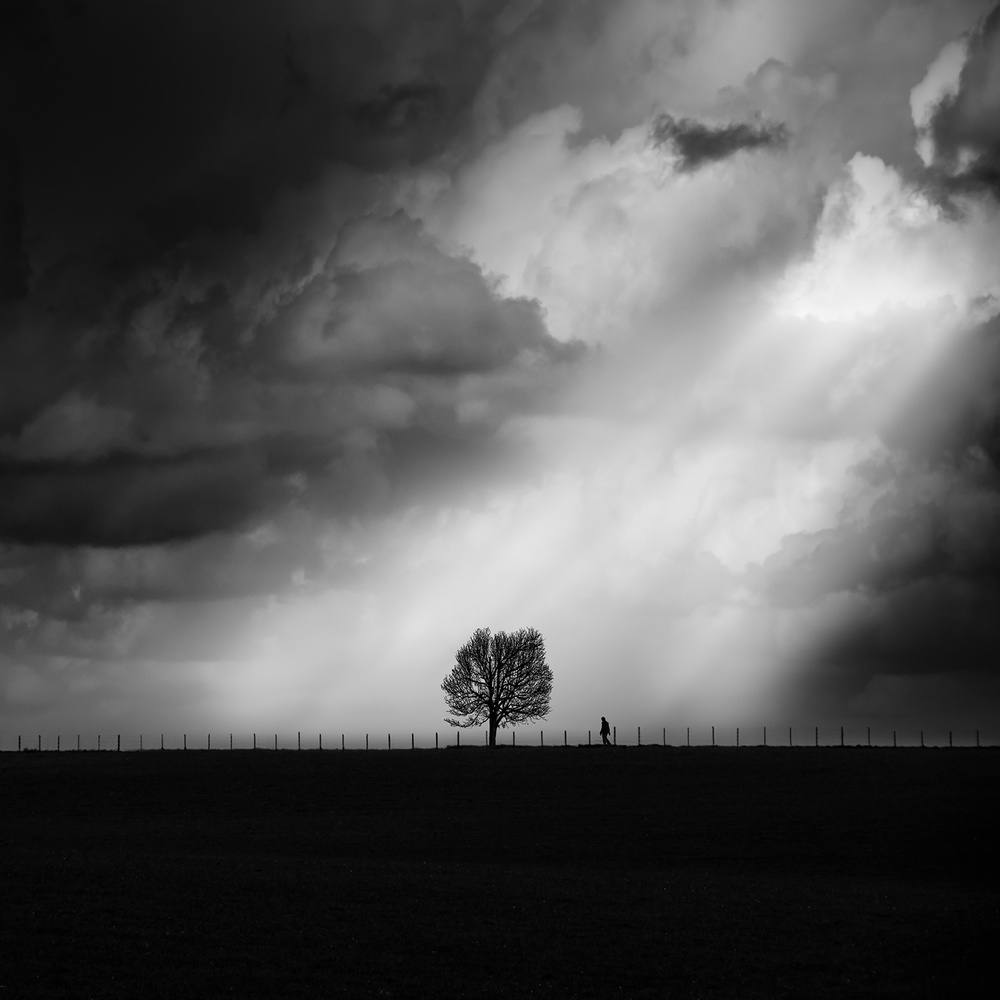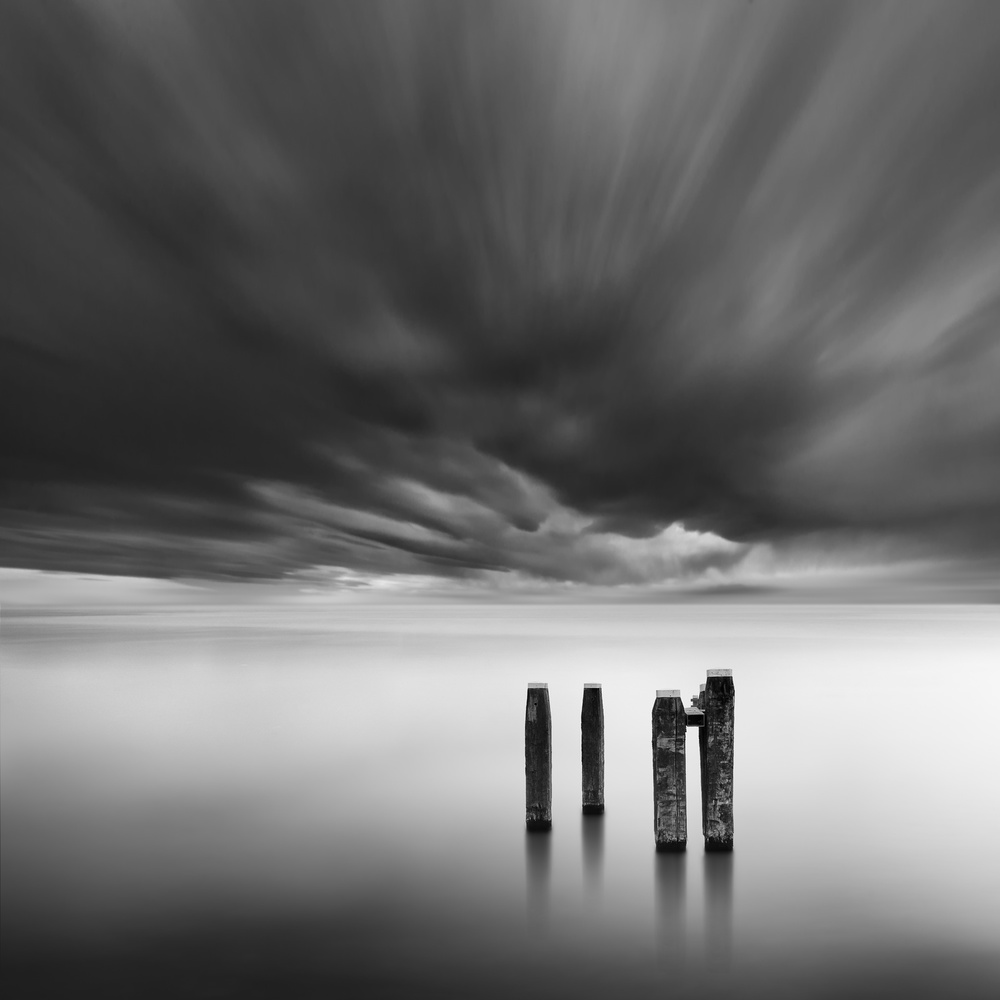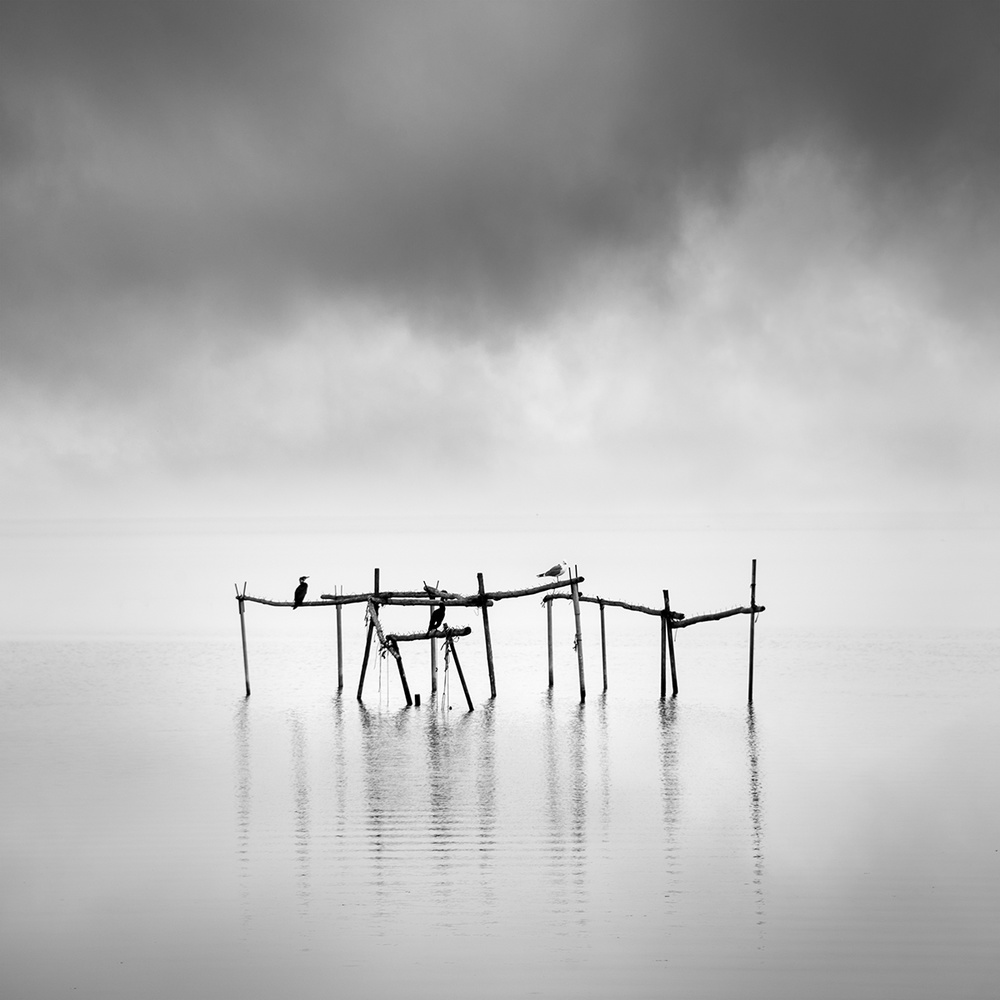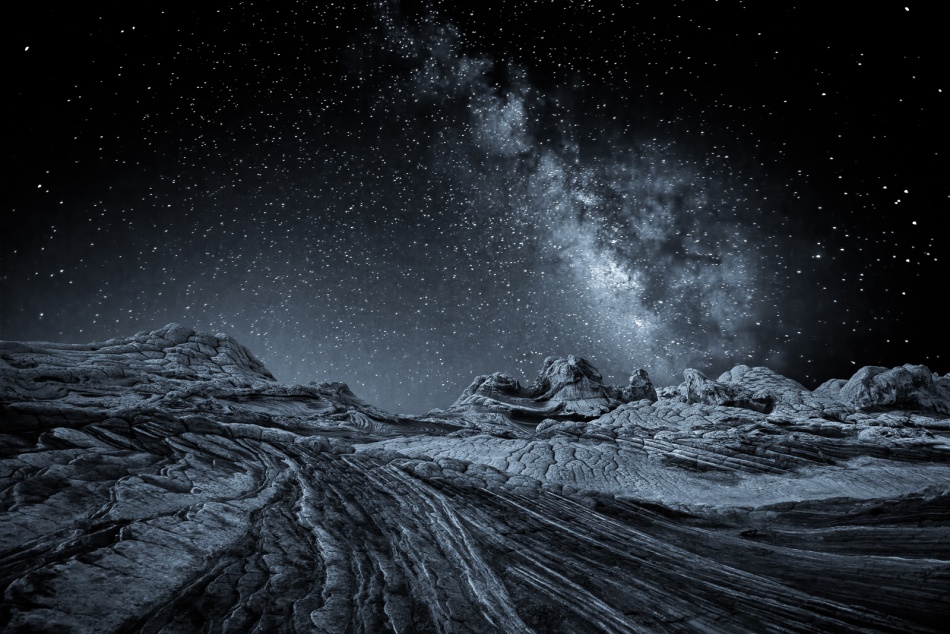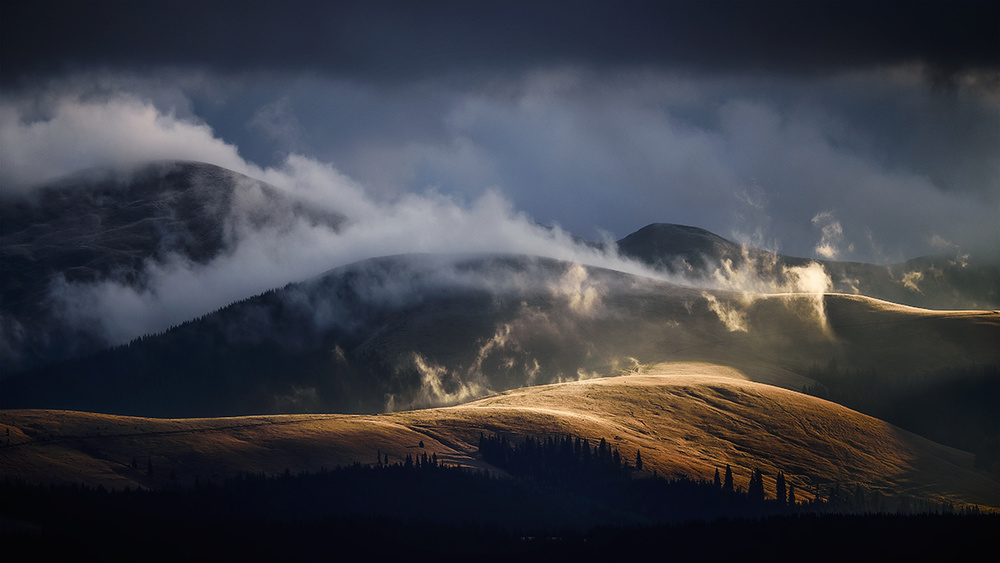Photographers
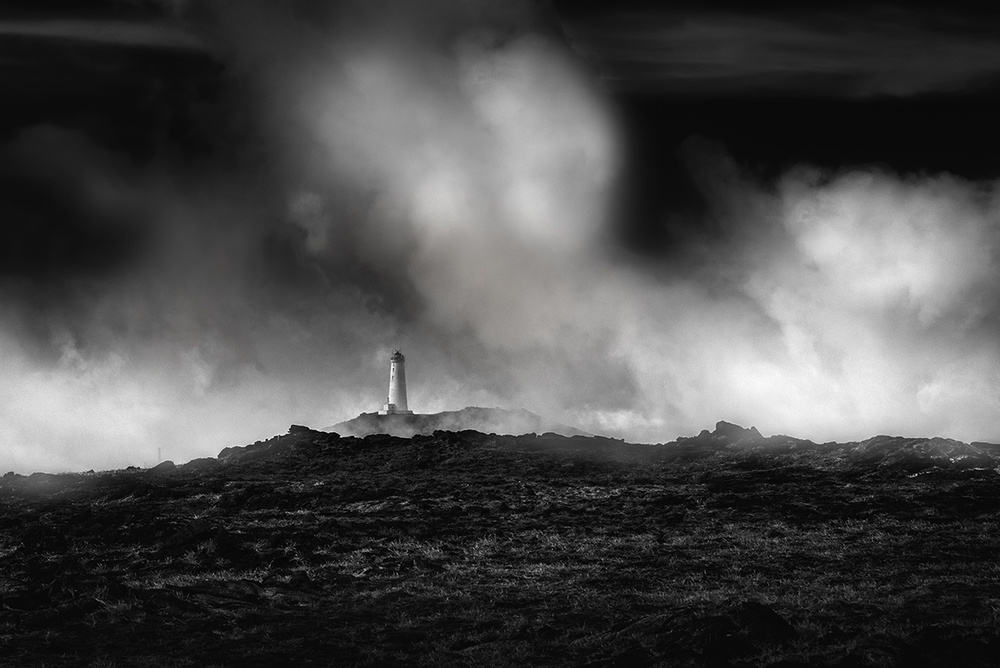
George Digalakis: Inspiring minimalism in square frame
1x Blog-Photographers
by Editor Marius Cinteză
“Discovering photography is amongst the things I am most grateful for, despite having to often wake up in unearthly hours, get soaked to the bone or lose my equipment in windy cliffs around the world. Getting to feel the printed image with my hands, and achieving the intended appearance and atmosphere, is a sufficient reward for my efforts.” - George Digalakis
George Digalakis is certainly a reference name in the minimalist landscape photography today. A fine art photographer born and living in Athens and a medical doctor by profession, George embraced the principles of minimalism as a life philosophy and the main direction in his photography art. Influenced by Michael Kenna’s works, his landscapes are amazing nature compositions, surreal and dreamlike. So unearthly and ethereal, his clean and relaxing captures of the nature elements satisfy his needs for harmony, order and aesthetic sense. Inspired by the nature itself, George intends (and succeeds!) to create a touching, melancholic atmosphere that best conveys his inner vision and underlying emotions in a square frame.
Multiple awards winner, George considers that the turning point in his career was winning the silver medal in the Px3 competition, back in 2014. He participated in numerous gallery exhibitions around the world and his work has been recognized in many international competitions, (e.g. TIFA 2018 awards, Px3, APOY, Sony World Photography Award, FAPA, SITTP); his amazing photos have been published in various magazines and sites (e.g. Digital Camera, Shot Magazine, Blur Magazine, Minimalism Magazine, Dodho Magazine, Yatzer, My Modern Met, F-Stop Magazine).
I invite you to discover George and his passion for aesthetic and minimalism in the article below! His remarkable works will transport us in the entirely relaxing, serene atmosphere and silence of the nature captured through the long time exposures!
George, thank you so much for taking the time to answer my questions! To start, I would kindly ask you to introduce yourself and tell us shortly about George Digalakis – the man behind the camera?
To begin with, I would like to thank you and 1x.com for the opportunity to present my work at the site!
I was born and raised in Athens, Greece, in 1960. A medical doctor by profession, I still live and work in Athens. Travelling and exploring new exciting places inspires me the most and it combines perfectly with my passion for photography.
Please tell us what first attracted you to photography? What was the most important experience so far that have influenced your steps in photography?
What attracted me to photography is its ability to create beauty in ordinary places and order out of the disordered world. The event that changed my attitude to photography was back in 2015, when winning the silver medal in Px3 competition made me realize that my images can stand in the international arena and most importantly affect other people.
How would you describe the photography and what does it mean to you?
Photography is a way of expressing myself, a door through which I can escape from everyday life, another way to see the world. Whilst typically a hobby, since I’m an amateur photographer with a day-to-day job, it is in fact a great passion with a most decisive role in my life. I spend almost all of my free time in activities connected with photography, and even my vacations are planned based on the photographic opportunities.
George, your amazing nature compositions are surreal and dreamlike! Where do you find inspiration for such remarkable works?
Nature is an inspiration for all the artists and the different way we convey it depends on our inner vision and life experiences. I draw inspiration from various objects, like the sea and the sky and from my emotional response to them. It is in the simple feelings that they evoke to me - vastness, quietness, tranquillity, symmetry, and balance - there I find the beauty!
How important are the story and the composition in creating the special, surreal tranquillity within your photography?
My work turns away from representation, conceptualism, and the endless search for meaning, and focuses on the wonder of beauty and simplicity. While proper composition is a crucial factor in conveying the intended emotions, I don't try to tell a story with my images. Every object I include in them - trees, old piers, wrecks and so on - has its own story though and I leave it to the imagination of the viewer to discover it or, even better, to create his own story.
Your works are often minimalist, clean and relaxing compositions involving nature elements. What is your relationship with these nature elements?
I have grown up near the sea and the water is an element I deeply love. It can be found in most of my works, but never as their central theme. It is usually the canvas on which I place my subjects. This enables me to balance the image and satisfy my need for order, serenity, and silence. The influence of natural or man-made objects over the waterscapes is an important feature of my work and I usually look for elements which convey timelessness, simplicity and sometimes mystery and melancholy.
How would you describe your photographic style, George?
Finding a unique, recognizable photographic style is something like a holy grail to photographers, but for me it is a chimera as the style is an ever-evolving process, constantly changing as we evolve. Even more, I don’t believe that a specific style is possible for every project we engage to.
That said the main body of my work can be characterized as minimalistic, with water spaces being a common feature. The square format, use of wide-angle lenses and long exposure technique and of course the absence of colour determine my work. Finally, a common feature that can be considered part of my style is the emotions evoked by my works – beauty, silence, solitude and melancholy.
You use long exposure technique to reveal the pure beauty and stillness of the nature. Why are you so drawn to this photography technique?
I favour long exposures because they allow me to introduce the dimension of time in a two dimensional medium and to create a dreamy atmosphere. To achieve this I use Neutral Density filters, often stacked on top of each other. Photographing with slow shutter speed, over a period of time, I can capture the changing world: rivers flow, clouds pass, the waves sway to and fro. The “film” accumulates time, light, and events in a way elusive to the eye.
With long exposures I can also eliminate the details from the background and highlight my main subjects, which are the constant in the shifting landscape. It removes all the movements, all of the flow, all of the ripples, all of the waves of water, blurring and flattening what was once there. The real becomes surreal.
Can you please tell us something more about your long exposure workflow? How much effort do you put in the photography preparation process?
As I usually shoot big landscapes in long exposure mode, I need a lot of equipment, compared, for instance, to street photography. A tripod, wide angle lens, photometer, ND and polarizing filters and a remote camera control are essential for a successful shooting, as well as an ND filter factor table, pieces of cloth for cleaning the filters and lenses from water drops, proper clothing etc. And, of course, a check of the batteries (camera, remote control, and photometer) must always be performed.
Weather conditions are a major factor for a successful outing. I prefer low contrast scenes, while moving clouds are an essential part of my images, and therefore checking a meteorological site is a prerequisite to my preparation. A virtual exploration using Google maps is of great importance; especially in the cases I’m not familiar with the location. In any case spending some time inspecting the environment is always necessary before proceeding to the actual shooting. Being well prepared can make all the difference between success and failure.
Since the average time for taking a long exposure photo is well over 10 min (photometry, calculation of the ND factor, putting the filters, exposure time and noise reduction procedure), choosing the right composition, point of view and exposure time is a must. Repeating the whole process is a waste of time, so it’s worth exploring your subject from every possible point of view beforehand. Another issue to think about before clicking the shutter is the visualization of the final frame, as I work mainly in square format. Shooting in portrait mode makes things easier. Even with the best possible preparation I rarely come back with more than 5 images.
I’ve written an article about long exposure photography in my blog, where the interested readers can find more details: http://www.digalakisphotography.com/themagicofblackandwhitephotography/long-exposure-explained
What is the equipment you currently use for the long exposures (e.g. camera, lenses, tripod, etc.)?
I currently use a NIKON D810. My most used lens is the NIKON 14-24mm on which NISI 150mm square filters are attached. A stable tripod is essential in long exposure photography and I use a carbon tripod well over 2kg, but its stability pays for the extra effort to carry it.
What would be your most important advice to those approaching this photography technique?
In the above mentioned article there are a lot of technical advices about long exposure, but the most important advice is “Patience”. One needs patience to get accustomed to the specific long exposure process (so he can perform it faster and without much thinking), patience for the careful preparation before the shooting, patience during the exposure (often more than 15-20 min). It is not a genre for impatient or quantity oriented photographers.
Harmony and aesthetic vision are obviously the main ingredients of your wonderful works. What else do you consider as important element to obtain the perfect result?
The element I consider the most important when processing the image is to achieve a certain atmosphere. I spend a considerable amount of time trying to adjust the tones in order to achieve the intended result. It is not necessarily the real atmosphere of the place, rather it is the mood the landscape evoked to me.
You convey a deep sense of order, balance and symmetry that can be also observed from the square format you prefer for most of your photos from “waterscape” series. Can you please tell us more about this series?
As a matter of fact “waterscapes” is not a series. Most of my works could be classified under this title, which includes a number of projects. All share some common characteristics that unite them – the minimalistic approach, long exposure technique, lack of colour and square format. What I try to achieve is an invitation to the viewer to meditate in a world of silence and solitude.
The landscapes you reveal in your photos seems so unearthly and ethereal. What do you look for when choosing the locations where you intend to photograph (e.g. specific subjects or compositions)?
The background of the photograph plays an essential role in my images. So, open spaces and appropriate weather conditions have almost the same importance. As for the main subject, I’m looking for man-made or natural objects that convey timelessness, simplicity and hopefully mystery.
George, who are your favourite minimalist photographers whose works have influenced you and your photography?
Michael Kenna was, as you may expect, the photographer whose work has influenced me the most, especially his images from Japan and New Zealand. I still remember the 1st time I saw his famous tree in Wanaka Lake – it came as a shock to me. Of course I’m inspired by many other classic and contemporary photographers – Hiroshi Sugimoto, Hengki Koentjoro, Nathan Wirth to mention only a few.
You have joined the 1x community in 2015 and since then, within this short period of time, you have more than 150 published photos in the 1x gallery. Where did you first learn about 1x and why do you think 1x is different?
I learnt about 1x while searching on the web for interesting photography communities. I was impressed by the quality of the images displayed in the front page, but the feature that struck me most was the curation process. The two separate stages – member’s choice and expert’s selection, create the conditions for an, as far as possible, objective assessment.
What is your favourite photo taken by yourself and why it is special to you?
When I finished working on “Trees with Birds”, I felt that I had made something special. Everything matched exactly my vision – the atmosphere, the tones, the light. It has won a lot of awards and recognition and I still consider it one of my best works.
George, we almost reached the end of this interview. I would kindly ask you now to share with us your future plans in photography.
This year I published my 1st photography book “Silent Waters” and had my first personal exhibition under the same title. So my long-time-ambitions have finally been fulfilled. It was a busy and interesting time lately and I need some time to rest and plan for the future. I have many ideas about my next exhibition and book, but nothing concrete that I could share today.
Thank you so much for this interesting discussion, George!
Once again thank you Marius and the 1x.com for this opportunity!
. '

